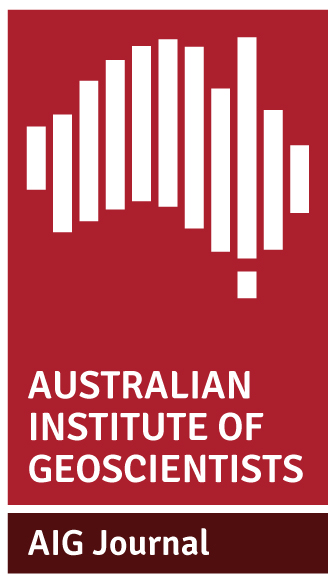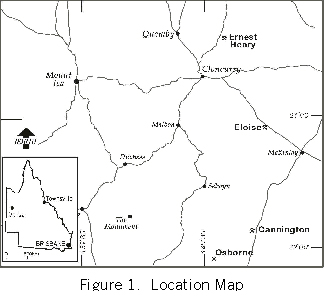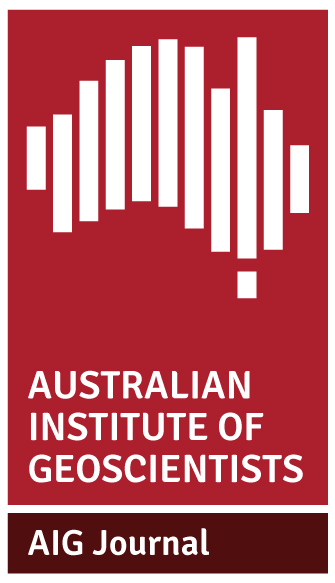Geophysics in Northwest Queensland – Improving the Use of Electrical Geophysics

J.G. Donohue and S.N. Sheard, MIM Exploration Pty Ltd
Click here to download paper as PDF
Introduction
Conventional geophysical techniques have been applied in North West Queensland to assist in locating economic mineralisation for some considerable time. The value of large scale airborne surveys such as magnetics, radiometrics and electromagnetics in both mapping and direct detection has been shown in the last decade with such discoveries as Cannington and Osborne (Anderson and Logan, 1992) by targeting discrete magnetic highs (Figure 1).
 Ground techniques such as electrical geophysics have been responsible for at least two discoveries in the North West Queensland region in the last decade. Both Ernest Henry (Webb and Rowston, 1995) and Eloise (Brechannini and Asten, 1992), were found by drilling time domain electromagnetic anomalies (Figure 1). These ore bodies are situated in the Eastern Succession of the Mount Isa Inlier. (more…)
Ground techniques such as electrical geophysics have been responsible for at least two discoveries in the North West Queensland region in the last decade. Both Ernest Henry (Webb and Rowston, 1995) and Eloise (Brechannini and Asten, 1992), were found by drilling time domain electromagnetic anomalies (Figure 1). These ore bodies are situated in the Eastern Succession of the Mount Isa Inlier. (more…)
The Mount Garnet Zinc Skarn Deposit

Ian Morrison1 and Joe Treacy2
1Lantana Exploration Pty Ltd, 2Kagara Zinc Ltd
Click here to download paper as PDF
Introduction
Kagara Zinc Limited is currently undertaking a programme of detailed infill and ore delineation drilling at the Mt Garnet zinc skarn deposit. A feasibility study will then be completed to assess the viability of mining. If successful, development should commence within 12 months.
The global resource currently stands at 3.94 Mt at a grade of 6.5% ZnE (Zinc Equivalent) calculated at 3% ZnE cut-off; measured and indicated resources comprise roughly 65% of this global resource (Kagara Zinc Ltd prospectus, 1999). The current drilling programme has revealed high grade mineralisation below the previously interpreted base of the orebody which will add substantially to the resource. It is expected that re-optimisation of the planned open pit will include a substantial amount of this ore. (more…)
Recent Developments in Geology, Exploration and Production at the Mt Gordon Copper Mine

Anthony M Hespe, Western Metals Ltd
Click here to download paper as PDF
Introduction
Gunpowder– now called Mount Gordon – will be a familiar name to those who have worked in the mining industry in Queensland. It has a history of intermittent copper production, attempts at novel treatment processes and periods of closure dating back to the 1920s. Recent developments in geology, exploration and production, which have transformed the economics of the deposit, are the subject of this presentation.
The Century Zinc Deposit – Geological Update

Ian Kelso1, Terry Briggs1 and Paul Basford2
1Pasminco Century Mine Limited, 2Pasminco Exploration, Melbourne
Click here to download paper as PDF
INTRODUCTION
The Century zinc-lead-silver deposit is located 250km northwest of Mount Isa in the Gulf of Carpentaria region of Queensland. Initial discoveries of lead and silver in the region by prospectors in 1887 led to sporadic small-scale mining and exploration activities up to the 1970’s. In 1987 (hence the name Century), CRA Exploration (CRAE) commenced a regional exploration program in the area resulting in the discovery drill hole intersecting the Century deposit on the 4th April 1990. Resource definition drilling and feasibility studies from 1990 to 1996 by CRAE and Century Zinc Limited (CZL) resulted in the estimation of an in-situ mineral resource of 167Mt grading 8.2% zinc, 1.2% lead and 33 g/t silver. In 1997, Pasminco acquired the deposit from RTZ-CRA Limited and commenced project development culminating with the first ore mined and treated in the Pasminco Century Mine concentrator on the 6th November 1999.
The Century open pit will occupy an area approximately 300ha and extend to a final depth of 340 m. The mining rate is scheduled at 5Mtpa of ore by selective mining and around 80Mtpa bulk waste mining by truck and rope shovel fleet. The ore will be processed on site and then pumped as zinc and lead concentrates along a slurry pipeline 300km to the port facility at Karumba in the Gulf of Carpentaria. The Pasminco Century Mine will be the world’s largest zinc mine producing 780,000 tpa of zinc concentrate over a 20-year mine life.
The Lady Loretta Pb-Zn-Ag Deposit – Analysis of an Opportunity

Craig MacDougall, Noranda Pacific Pty Ltd
Click here to download paper as PDF
Introduction
The Lady Loretta Pb-Zn-Ag deposit is located 140km NNW of the city of Mt Isa in NW Queensland and was discovered in 1969. To this day it remains undeveloped. The published resource estimate for the deposit lists a global geological resource of 8.3Mt grading 8.5% Pb, 18.4% Zn and 125 ppm Ag (Hancock and Purvis, 1990). This is a small, but high grade example of a sediment hosted Pb-Zn deposit, typical of those giant deposits for which the Mt Isa Inlier is world famous. At the time of Noranda’s initial involvement regarding the evaluation of the deposit, the grand total of our knowledge with respect to the deposit is summarized in this opening paragraph.
In 1998 after a considerable evaluation and due diligence, Noranda Pacific Pty Limited, a wholly owned subsidiary of the Canadian based Noranda Inc., entered into a two-year option agreement to evaluate the Lady Loretta Pb-Zn-Ag deposit with the Australian junior mining company BUKA Minerals Limited.
A brief description of Noranda is given to acquaint the Australian reader with Noranda and set the context for the exploration group’s project hurdle targets. Noranda is one of Canada’s largest diversified mining and metals companies employing 18,000 people, at 15 operating mines, 18 metallurgical plants and 11 fabricating facilities worldwide with total assets of US$8.25B. Associated subsidiaries or major interests include a 49.9% interest in Falconbridge (the world’s second largest Ni producer) and a 28.4% interest in Battle Mountain Gold (a million ounce/ per annum gold producer). Attributed annual refined metal production totals 500,000t Cu, 300,000t Zn, 100,000t Pb, 45,000t of Ni, 40Moz Ag and 1.0Moz of Au. Major new projects include a 37.5% interest in the US$2.5B Antamina Cu-Zn project in Peru, and the US$500M Magnola magnesium project in Quebec, Canada.
As a major base metal producer and miner it is obvious that the hurdles set for the exploration group are such that any given project must demonstrate the potential to impact significantly on our total metal production, over a significant production life and by extension impact the bottom line. This can be a daunting hurdle to overcome as an explorationist within a large organization. As a result many good projects are turned down not because they are not good exploration projects, but rather because we are simply unable to demonstrate sufficient upside to meet the high expectations. Thus, explorationists must in addition to their keen exploration skills bring a thorough “business minded” approach to the opportunity in order to satisfy internal corporate expectations.
With the long history and folklore surrounding the Lady Loretta deposit, and the context above, one of the most frequently asked questions since Noranda got involved with this project is why? In this paper, I will review the thinking of Noranda’s exploration group regarding the assessment and hurdle setting of this base metal opportunity.
